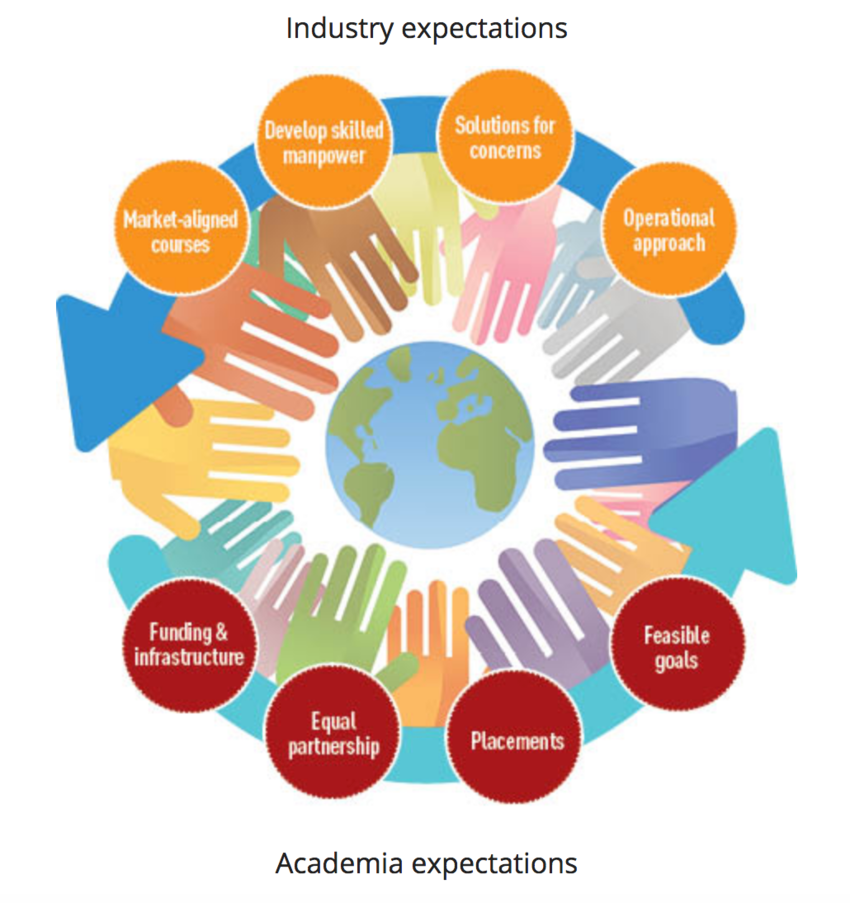
Let’s start with some facts. India’s research and development (R&D) spend, as a percentage of GDP is 0.7%, as compared to Israel (4.6%), South Korea (4.5%), Japan (3.2%), US (2.8%) and China (2.1%). If we break this down further into industry vs government contribution to R&D spend, the figures are even more telling. The US spent $456 billion in 2013 of which $322.5 billion or 71% was by industry! In India, the story is entirely in reverse, with industry contribution to R&D spend at 30% of total spend and a miserly 0.9% of their total revenues. While there has definitely been growth in the R&D spend (nearly doubling) in the last decade, it is extraordinary that in the age of scientific research propelling commercial success, we harbour dreams of a $5 trillion dollar economy with that kind of money in research.
There has been plenty of discussion in this area with the New Education Policy 2020 aiming to create an independent body called the National Research Foundation (NRF) with the following objectives:
- to fund competitive, peer-reviewed grant proposals of all types and across all disciplines;
- to seed, grow, and facilitate research at academic institutions;
- to act as a liaison between researchers and relevant branches of government as well as industry,
- to recognise outstanding research and progress
While this gives hope towards developing a thriving research community in India, it really is another attempt by the government to kickstart the process. Instead, what is required increasingly, is the development of a robust and multifaceted industry-university interface that builds on the mutual requirements of both parties.
The graphic here is a great summary of these requirements. Exploring these strands of mutual requirements will help elevate the industry-university relationship and kickstart a process of innovation and growth in the country.

1. Sponsoring Research:
For universities to support basic research with appropriate infrastructure and personnel, the majority of funding is through government grants, with some internal funding via high-net-worth individuals (HNIs) and alumni. Actively developing industry partnerships to support commercially viable outcomes is a great way for a university to develop an additional funding line. It is estimated that in the US, a research-oriented university with $200 million annual expenditure can source, on an average, $14 million from industry partnerships.
These partnerships can take many forms including establishing research centres in the university campus, individual project sponsorship, external joint development centres, etc. Industry can also sponsor research chairs and fellowships in areas of interest at the university. While applied research is often the area of interest for companies, seeding early-stage research is now becoming more popular. IITs and IISCs would be a natural port of call for most companies. However, a nationwide framework classifying research output by university can open doors to other institutions that can work better for industry’s desired outcomes. The key for both parties is to develop committed long lasting relationships as research and development is a long-term affair, and research outcomes that have commercial impact on the company bottomline depend on robust relationships.
There has been quite a bit of activity on this front recently that has been driven by Indian IT companies and focused on computing, artificial intelligence and machine learning research. Indian e-commerce giant Flipkart and IIT Kharagpur’s collaboration has seen several papers published on conversational dynamics and chatbots. New York based CA Technologies collaborates with IIIT-Hyderabad on applied research projects that includes interfaces such as Natural Language Processing (NLP), Artificial Intelligence (AI) and ML (Machine Learning). IIT Madras is rated as the top institute when it comes to industry consultancy and business partnerships. It has recently opened the IITM research park which is a research initiative and operates like an independent company that works in partnership with leading businesses.
These are extremely encouraging signs that need to be extended across the industry AND the university spectrum, to focus on a wider range of subjects like chemicals, genetics, life sciences, aerospace, agriculture, material science, environmental science, and space technology among others. A thriving industry-academia relationship should be further encouraged by local policy initiatives and efforts like matching state funding for industry sponsorships. Finally, a neglected research area where industry can tap into are social sciences. There is plenty of research in areas of psychology, anthropology, sociology etc., that increasingly has commercial outcomes for companies and is a potential goldmine to invest in.

2. Talent Management:
This is a critical area that needs to be carefully nurtured, both by industry and academia. As per the ‘National Employability Report — Engineers: Annual Report 2019’, 80% of engineering graduates are unemployable in today’s economy. This cuts both ways, as industry spends money on extensive retraining programmes while hiring graduates and universities suffer from low placements thus affecting future student intake. Another damning statistic in the report is that only 40% of engineering students undertake internships during their course. This is a problem as engineering is an application-based field. Given these numbers, there is an urgent requirement for developing industry-university collaboration to help create better curriculum that is aligned with industry needs. It is also vital that internship and apprenticeship programmes be urgently fostered in the educational institutions, in partnership with industry (local or otherwise), to give practical experience to students.
Secondly, for universities to retain their best researchers with appropriate funding and infrastructure, it is imperative that new models of industry partnership are developed that support talent retention. Flexible schedules for research faculty and industry research groups situated within university campus would be two ways to approach this problem. A collateral benefit of talent retention would be better teaching faculty at the universities for the students. Otherwise, it is always tempting for a researcher to join industry with its better compensation, prompting a brain-drain in academia.
On the other hand, for industry, building its R&D close to university clusters is a great way to obtain talent and actionable research. Silicon Valley, with its proximity to Stanford and University of California, Berkeley, has long been a great example for innovation ecosystems.
3. Commercialisation and intellectual property management:
Commercialisation of research outcomes, patent ownership, non-disclosure agreements and intellectual property management are often areas of contention in industry academia interfaces. This needs clarity in early-stage discussions and clear frameworks in light of university and government regulations and industry requirements. Unfortunately, in India this has not evolved in a structured format and is completely subject to individual agreements.
In a previous consulting assignment at the Office of Research Services at a prestigious Canadian University, I was witness to the efficiency and usefulness of the Technology Transfer Office (TTO) and how heavily researchers depended on it to ensure proper negotiations with industry sponsors on a wide-ranging set of issues. The TTO will be a critical component for a university that aspires to develop an active industry interface. Israel sets a great example in this area. All Israeli research universities have technology transfer offices which act as an intermediary between universities and the private sector. The Weizmann Institute’s TTO office, Yeda, Israel’s first university TT unit, has been ranked the third-most profitable in the world.
There are existing policies on Intellectual Property Rights (IPR) which are aimed at incentivising researchers (30% of royalties from commercialisation) and haven’t been implemented properly. The new NRF is supposed to change that. A proactive approach to commercialisation, flexible patenting norms and royalty management will go a long way in incentivising research in the country.
Small Business and University partnerships
Small businesses and startups can also benefit from university partnerships. Incubation centres in several universities these days have provided a real fillip to the burgeoning startup economy. Startups are able to access infrastructure, equipment, and are able to meet other startups under the same roof. Universities can become a source of low-cost talent for startups. Businesses can access cutting edge research in the university if there are overlapping interests. Universities will have an opportunity to increase placements and collaborate with small businesses in areas like course design and research support.
The dream of an Atmanirbhar Bharat (Self Reliant India) is a noble one but requires an extensive overhauling of our research infrastructure with all stakeholders – government, industry, academia, non-profits – playing their part. The growth of a vibrant industry academia interface should be the cornerstone of this dream.
REFERENCES
- https://sloanreview.mit.edu/article/best-practices-for-industry-university-collaboration
- https://www.weforum.org/agenda/2018/11/3-ways-to-nurture-collaboration-between-universities-and-industry/
- https://stm.sciencemag.org/content/2/51/51cm25
- https://www.google.com/amp/s/hbr.org/amp/2018/01/why-companies-and-universities-should-forge-long-term-collaborations
- https://www.google.com/amp/s/www.policycircle.org/economy/industry/industry-university-partnership-key-to-innovation-growth/amp/
- https://analyticsindiamag.com/leading-institutes-india-focusing-industry-relevant-research/
- https://advocacy.sba.gov/2019/09/18/university-small-business-partnerships-a-growing-trend-with-encouraging-results-for-local-communities/
- https://www.google.com/amp/s/amp.theguardian.com/small-business-network/2013/dec/09/small-business-collaborate-university

Disclaimer: The views, thoughts, and opinions expressed in the content belong solely to the author, and not necessarily to the author’s employer, organisation, committee, or other related groups or individuals, including Marg Advisory Services.


Joyita
2 Mar 2021Very insightful ! Industries, HNIs, Funding agencies and Govt consortia in a mission mode for specific areas of innovation, would enable academic researchers as well as start ups to address gaps which wouldnt otherwise be possible by just a small group. Especially, in the healthcare domain, a robust partnership between university and industry would fast track the development of solutions for emergency situations.
Sandeep Hota
9 Mar 2021Thank you Joyita! Mission mode is not an exaggeration given the speed and dynamic of change in today’s world!
Babla
2 Mar 2021Thank you Sandeep for sharing your thoughts. It’s fact based, relevant and extremely compelling!
Thoughts on the appetite for change from the government and industry? Specifically to prioritize these much needed reforms/initiatives.
Sandeep Hota
9 Mar 2021Thanks for the feedback Babla! The appetite for change is quickening at least at the policy level. There is still a trust deficit between industry and academia in terms of capabilities and intentions. That is the bit where leadership is sorely missing either from industry bodies or university associations. I believe while the govt can nudge the process along it really is upto these two to believe in the benefits of this interaction.
Shubhranshu Patnaik
4 Mar 2021Very insightful, Sandeep! Traditional and closed approaches to industry R&D is increasingly being replaced by an alliance driven model where along with the more accepted academic partnerships, the power of the start-up ecosystem is being increasingly leveraged. Indian start-ups have done incredibly well in several fields and industries need an operating model which integrates them into their innovation and R&D strategy.
Sandeep Hota
9 Mar 2021Thanks for the feedback Shubranshu bhai! The startup ecosystem has definitely provided a fillip to the industry academia relationships . I have cited a number of cases on that. It is still quite technology centric when research in basic science, social sciences among other areas also can contribute to commercial outcomes ( longer and shorter both) . This is where strategic thought from industry and academia needs to be aligned to evolve improved collaboration models. Even the traditional approach works very well if adhered to! Witness IISC’s aerospace departments longstanding relationships with American giants like Lockheed Martin.
Sucheta
4 Mar 2021To be leaders we need innovation and innovation needs research! Universities need to view research as a priority programme and not just another avenue for giving out higher degrees . This requires policy level changes and spending not just at the university level . If the nation prioritizes research ,universities and businesses will follow.
Sandeep Hota
9 Mar 2021Thanks for the feedback Sucheta! Very prescient on the need of universities to evolve priorities on their research output and faculty evaluation.
Rachit
5 Mar 2021Well captured. In India, research has long struggled due to lack of industry support, and lack of commercial ventures coming out of innovation done at universities. I feel, part of it has been because of horizontal business conglomerates which have been traditionally prevalent in India apart from several other reasons – talent, financial resources etc.
In past couple of years, with markets opening, evolving startup eco-system, and corporates venturing into Industry 4.0, I think stage would have been set for industry led research! Any thoughts / examples of how things are changing in recent times?
Sandeep Hota
9 Mar 2021Thanks Rachit for your observations! You are on point on the conglomerate way of doing business in the country which follows a opportunity based approach derived primarily from govt policies and moves. It has definitely NOT been innovation led growth which in the longer run creates and sustains thriving research ecosystems and vice versa. The new collaboration models with startups are examples of where university incubation spaces and startups are interacting to create value and innovation. I have cited some examples of it in the post. However in our opinion it is still nascent and quite limited to the technology space. I have had captains of traditional industry sectors voice their disquiet about the quality of research output in India and vice versa from University leaders. This is the gap which prevents a vast amount of research output with commercial potential to burst forth across numerous areas. From self healing concrete, bioplastics to crafts and service design- a whole plethora of areas can benefit from industry university collaboration.